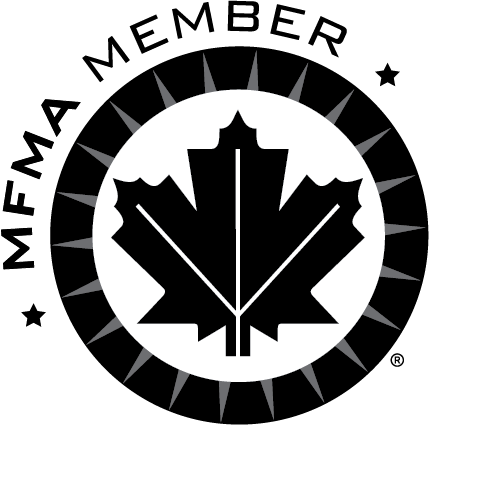Home > Common Flooring Types
Common Flooring Types
Resilient Flooring
Vinyl Composition Tile (VCT)
Overview and General Characteristics: Vinyl composition tile is the most popular resilient flooring today for commercial applications. These 12” x 12” tiles come in a variety of colors and grades. They are easy to install and are cost effective. VCT offers good dimensional stability, durability, impact resistance, UV light stability and heat stability.
Composition: Approximately 60 – 70% limestone/clay/talc mixture, 15 – 20% binder (filler), 10% vinyl (resin), 5% fiberglass, 3 – 5% plasticizer and 1 – 5% pigment.
Maintenance Characteristics: VCT holds all types and brands of floor finish beautifully due to its porous nature.
Sheet Vinyl
Overview and General Characteristics: This flooring is produced in sheet widths from 6’ to 15’, making it easy to install and eliminating seams which can trap dirt and moisture. Sheet vinyl is not commonly used in commercial buildings since it sacrifices durability when compared to VCT.
Composition: Similar to VCT but contains more vinyl resin and less limestone filler, giving it greater flexibility.
Maintenance Characteristics: Holds finishes nicely though generally not recommended in residential settings since finishing requires more maintenance and eventually stripping. Clean with neutral detergent.
Vinyl Asbestos Tile (VAT)
Overview and General Characteristics: Common resilient flooring that was produced from the mid-1950’s until the mid-1980’s. Much of it was produced in the 9” x 9” size, though 12” x 12” was also available. This flooring hasn’t been produced for health and safety reasons since mid-1980. VAT was known for its durability, dimensional stability and heat resistance as evidenced by the amount still found in older buildings.
Composition: Approximately 50 – 70% limestone, 5 – 20% asbestos, 15 – 20% binder, 5% plasticizer and 0.5 – 5% pigment.
Maintenance Characteristics: This floor accepts finish nicely. Being old and porous, it usually requires a coat or two of sealer if it is stripped (follow OSHA and EPA guidelines for stripping). On very old floors, use of high alkaline strippers is not recommended.
Linoleum
Overview and General Characteristics: Invented by a British rubber manufacturer in 1860, linoleum is a tough, natural ingredient-based flooring that has enjoyed a slight resurgence with homeowners recently due to its positive environmental profile. It is still used in commercial applications because of its high durability. It is nearly impossible to tell sheet vinyl from linoleum once installed.
Composition: Linseed oil mixed with powdered wood and/or cork, ground limestone, resin binders, drying agents and pigments applied to a jute backing.
Maintenance Characteristics: Linoleum should be kept finished at all times since it is quite porous. New installations may be tough to finish for a few weeks since it off-gases linseed oil vapors. Stripping with highly alkaline strippers is not recommended since bleaching and fading can occur. Clean with neutral detergent.
Man-Made Stone Flooring
Terrazzo
Overview and General Characteristics: Terrazzo flooring offers high durability and deep beauty. Its upfront cost is considerably higher than resilient flooring but when viewed long-term, it can actually be less expensive.
Composition: Marble, granite, quartz and/or glass chips mixed with portland cement, polyacrylic-modified portland cement or epoxy resin and poured into place.
Maintenance Characteristics: Portland cement and polyacrylic-modified portland cement floors hold finish nicely. Some pure epoxy-based floors can be tough to finish due to its low moisture absorbency and hydrophobic nature (non-affinity for water). Avoid using high pH cleaners and acid-based products on terrazzo.
Glazed Ceramic
Overview and General Characteristics:Glazing ceramic tile creates a durable surface that is easy to clean, resists stains and scratches, doesn’t fade and is slip-resistant.
Composition: Identical to unglazed except a liquid glass is applied to the tile at very high temperatures. This creates a hard, non-porous surface.
Maintenance Characteristics: Glazed ceramic tile will NOT hold floor finish. The surface is too smooth for proper floor finish adhesion to occur. Clean with neutral detergent or all-purpose cleaner.
Concrete
Overview and General Characteristics: Concrete is universally used for commercial building slabs. Most are covered with another flooring material such as tile, carpeting or wood. Concrete floors that are not covered with another material are gaining popularity in retail stores and other commercial buildings since it provides a low cost yet highly durable flooring surface.
Composition: Approximately 10 – 15% portland cement, 40% stone aggregate, 25% sand aggregate, 15 – 20% water and 5 – 8% air.
Maintenance Characteristics: Concrete can be tricky to finish with acrylic-based coatings. High alkalinity, high moisture, grease and oils, and unknown curing compounds and sealants can make finishing difficult. Floors with a history of accepting acrylic floor finishes can generally be finished with any Essential coating.
Unglazed Ceramic (Quarry Tile)
Overview and General Characteristics: Quarry tile provides an attractive floor that is durable and easy to maintain. These tiles are usually red in color and 6” x 6” in size with a ½” thickness. Quarry tile is often installed in foodservice areas.
Composition: Made from a mixture of clays that are fired at high temperatures (approximately 2200 degrees).
Maintenance Characteristics: Quarry tile can be finished with standard floor care products although this is not generally advised in foodservice or other “production areas”. If installed in hallways, stairwells or other non-production areas, Eccothane™ can be used with great success on these floors. Clean with neutral detergent or an all-purpose cleaner.
Brick Pavers (Paving Tile)
Overview and General Characteristics: Similar to quarry tile but larger in size and thickness.
Composition: Similar to quarry tile.
Maintenance Characteristics: Similar to quarry tile.
Mexican Tile (Saltillo)
Overview and General Characteristics: Saltillo tiles are natural clay tiles, hand-made in Mexico. Similar to terracotta tiles, saltillo tiles are rustic by design. The beauty and character of each tile comes from variations in size, color and texture. It is extremely popular in Mexico and throughout the Southwestern United States.
Composition: Unprocessed clay.
Maintenance Characteristics: The high alkalinity and porous nature of this tile necessitates sealing and/or finishing. Stonethane or Eccothane™ are good options. Clean with neutral detergent.
Natural Stone Flooring
Marble
 Overview and General Characteristics: A beautiful floor surface that is not suited for large commercial areas or heavily trafficked areas due to its soft nature (scratches easily), high absorbency (stains easily) and acid sensitivity.
Overview and General Characteristics: A beautiful floor surface that is not suited for large commercial areas or heavily trafficked areas due to its soft nature (scratches easily), high absorbency (stains easily) and acid sensitivity.
Composition: Combination of calcite and calcium carbonate.
Maintenance Characteristics: Penetrating sealers perform best on marble. Acrylic-based finishes can be used but success is often spotty. Marble should only be cleaned with neutral cleaner – avoid acid-based products, high alkaline products and products with high chelation.
Granite
 Overview and General Characteristics: Granite is used sparingly in commercial buildings due to its high cost. It is hard, doesn’t easily scratch and is stain-resistant – making it ideally suited for residential flooring.
Overview and General Characteristics: Granite is used sparingly in commercial buildings due to its high cost. It is hard, doesn’t easily scratch and is stain-resistant – making it ideally suited for residential flooring.
Composition: Quartz and feldspar mixture.
Maintenance Characteristics: Granite’s hard, smooth nature make it unsuitable for finishing with acrylic-based products. Clean with neutral detergent.
Slate
 Overview and General Characteristics: Slate is a smooth, soft, natural stone available in a wide variety of textures, colors and sizes. It offers good durability and stain resistance due to its semi-porous nature.
Overview and General Characteristics: Slate is a smooth, soft, natural stone available in a wide variety of textures, colors and sizes. It offers good durability and stain resistance due to its semi-porous nature.
Composition: Shale, clay quartz.
Maintenance Characteristics: Slate is generally not finished with acrylic-based products although, if used, they will usually adhere. Penetrating sealers can be used if desired and are often recommended for areas exposed to food and liquid spills. Clean with neutral detergent.







